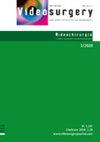Setting realistic expectations for weight loss after laparoscopic sleeve gastrectomy
IF 1.6
4区 医学
Q2 SURGERY
引用次数: 12
Abstract
Introduction Despite the clinical benefits of bariatric surgery, some patients have experienced disappointment with their weight loss. Setting realistic expectations is the key to success. Aim To develop a specific prediction calculator to estimate the expected body mass index (BMI) at 1 year after laparoscopic sleeve gastrectomy (LSG). Material and methods A retrospective analysis was performed to study 211 patients after primary LSG. Nine baseline variables were analyzed. Least angle regression (LARS) was employed for variable selection and to build the predictive model. External validation was performed on a dataset of 184 patients. To test the accuracy of the model, a Wilcoxon signed-rank test was performed between BMI estimates and the observed BMI. A linear logistic equation was used to construct the online predictive calculator. Results The model included three variables – preoperative BMI (β = 0.023, p < 0.001), age (β = 0.005, p < 0.001), and female gender (β = 0.116, p = 0.001) – and demonstrated good discrimination (R2 = 0.672; adjusted R2 = 0.664) and good accuracy (root mean squared error of estimate, RMSE = 0.124). The difference between the observed BMI and the estimated BMI was not statistically significant (median = 0.737 (–2.676, 3.254); p = 0.223). External validation confirmed good performance of the model. Conclusions The study revealed a useful predictive model for estimating BMI at 1 year after LSG. The model was used for development of the PREDICT BMI calculator. This tool allows one to set realistic expectations of weight loss at one year after LSG.设定腹腔镜袖状胃切除术后体重减轻的现实预期
引言尽管减肥手术具有临床益处,但一些患者对自己的减肥感到失望。设定现实的期望是成功的关键。目的开发一种专门的预测计算器来估计腹腔镜袖状胃切除术(LSG)后1年的预期体重指数(BMI)。材料与方法对211例原发性LSG患者进行回顾性分析。分析了9个基线变量。采用最小角度回归(LARS)进行变量选择并建立预测模型。对184名患者的数据集进行了外部验证。为了检验模型的准确性,在BMI估计值和观察到的BMI之间进行了Wilcoxon符号秩检验。使用线性逻辑方程构造在线预测计算器。结果该模型包括三个变量——术前BMI(β=0.023,p<0.001)、年龄(β=0.005,p<001)、,和女性(β=0.116,p=0.001),并表现出良好的辨别力(R2=0.672;调整后的R2=0.664)和良好的准确性(估计均方根误差,RMSE=0.124)。观察到的BMI和估计的BMI之间的差异没有统计学意义(中位数=0.737(-2.676,3.254);p=0.223)。外部验证证实了该模型的良好性能。结论该研究揭示了一个有用的预测模型来估计LSG后1年的BMI。该模型用于PREDICT BMI计算器的开发。该工具允许人们在LSG后一年设定现实的减肥预期。
本文章由计算机程序翻译,如有差异,请以英文原文为准。
求助全文
约1分钟内获得全文
求助全文
来源期刊
CiteScore
2.80
自引率
23.50%
发文量
48
审稿时长
12 weeks
期刊介绍:
Videosurgery and other miniinvasive techniques serves as a forum for exchange of multidisciplinary experiences in fields such as: surgery, gynaecology, urology, gastroenterology, neurosurgery, ENT surgery, cardiac surgery, anaesthesiology and radiology, as well as other branches of medicine dealing with miniinvasive techniques.

 求助内容:
求助内容: 应助结果提醒方式:
应助结果提醒方式:


